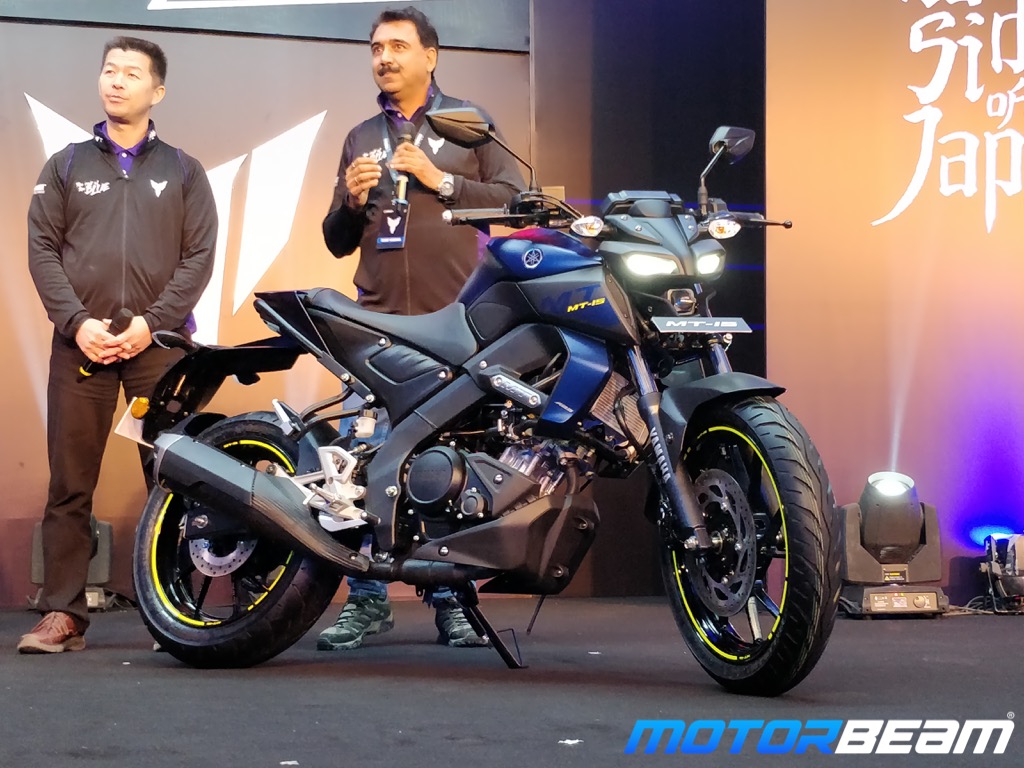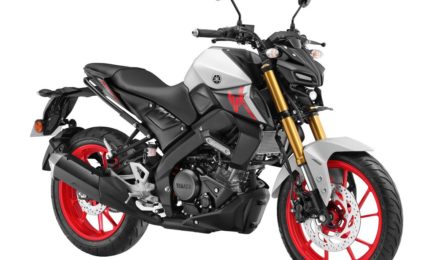Single piece seat is quite small and limited for pillion duties
Ergonomics – The riding posture of the Yamaha R15 is very aggressive while the MT-15 is exactly opposite. You sit upright as you hold onto a single-piece handlebar which is slightly wider. The seat height is reduced by 5 mm to 810 mm. The footpegs are now centre-set giving the MT-15 a very comfortable riding triangle. The tank is also sculpted in a different manner as it provides more room to lock your knees while the capacity is reduced to 10-litres. The seat is a single piece unit and the cushioning is rather better than the R15. Space, however, isn’t much for the pillion but the unique grabrails come in handy for the pillion to hold onto.
The 155cc engine has better punch, it easily lifts a wheel
Performance – The 155cc motor has been taken from the Yamaha R15 and while it runs on a slightly different tune it still produces the same power and torque figures. However, the acceleration of the MT-15 is better than the R15 as the final gearing has been revised with a slightly bigger sprocket at the rear. The engine feels the same as it has a lively top-end but the mid-range is now enjoyable and the throttle is quite responsive. Although the top speed is now reduced, better acceleration means it is more comfortable in doing city duties. I could not push the MT to its limit as we did not get to ride it on the straights but triple-digit figures came in quickly.
The motor is carried from the R15 with a slightly different state of tune
The engine has a good note and it feels lively in the top-end of the rev-range
The clutch feels light and the 6-speed unit has crisp shifts. The powerplant also inherits the slipper-clutch and aggressive downshifts don’t do any harm. There is no vibration from the engine but you can feel some buzziness when you hit the redline over 11,000 RPM. The 155cc mill does not feel harsh at all but there is some knocking if you ride at a higher gear on lower RPM. The exhaust note is quite throaty too and gets loud as you rev harder.
The Yamaha MT-15 tips into corners and holds its line well
Riding Dynamics – The street fighter ergonomics make the MT-15 very likeable and comfortable. Many would not pick the R15 due to its aggressive posture and dedicated riding position but the MT gets the same chassis setup as the R15. It is also 4 kgs lighter while the rake angle has been changed too. The front suspension is now softer while the rear is the same but does not get an aluminium swingarm. Tipping into corners isn’t as fun as the R15 but the MT-15 holds the line well. There is not much cornering clearance as the footpegs are close and the ground clearance is also reduced by 15 mm. Straight-line stability is just brilliant but the windblast can be an issue at higher speeds.
Straight line stability is brilliant, accelerates quickly
The Yamaha MT-15 isn’t as agile as the R15 but still has a fun-to-ride character
The Yamaha MT-15 also comes with the same tyre and brake setup. However, it is equipped only with a single-channel ABS. More focused on fun, the MT-15 is a street motorcycle and can do some slides for fun but a dual-channel ABS would have been a safer bet. The MRF tyres are of the same profile and they grip really well. Although the Yamaha R15 gets optional Metzeler rubber, there is nothing optional available for the MT-15. As the suspension setup is softer, there is slightly more nosedive under heavy braking.




